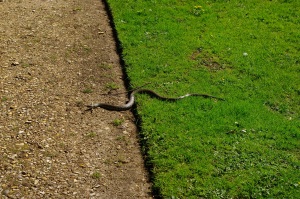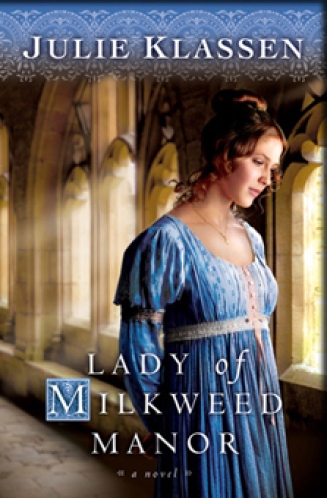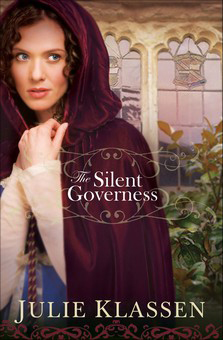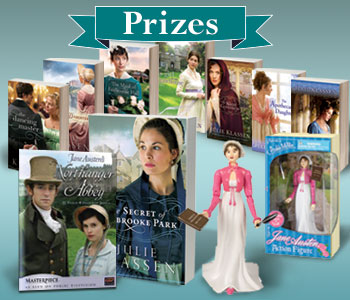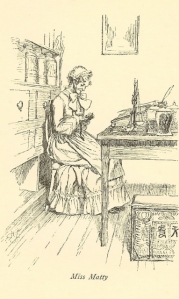UPDATE: Prices realized [with buyer’s premium] are noted as made available
I wonder what is going on – I posted last week on several upcoming auctions with a number of Jane Austen offerings – and now I write about even more – there seems to an abundance, more than usual – why is this do you think??
***************
I will start with this, out of date order, but perhaps the most unique, interesting, (and expensive) to us:
Sothebys – 10 December 2013: English Literature, History, Children’s Books & Illustrations. London.
Lot 283:

Austen, Jane – by James Andrews. PORTRAIT OF JANE AUSTEN.
watercolour over pencil heightened with gouache on card, depicting the author with brown curly hair and hazel eyes seated and facing towards the right, in a white frilled bonnet with light blue ribbon and a white dress with a dark blue ribbon under the bust, a small section at the bottom of the portrait apparently unfinished, oval, 143 x 100mm (overall sheet size 170 x 125mm), 1869, series of pin-holes at the top and bottom of the card, pencil markings probably by the engraver, mounted, framed, and glazed, frame size 327 x 247mm, the frame being a reused lid from a casket or box, French or German, probably eighteenth century, walnut inlaid with boulle-style marquetry of flowers and scrollwork in brass, silver, ivory, and mother of pearl, loss to surface of portrait probably due to insect damage, mostly affecting the dress, slight discolouration at edges seemingly where previously mounted in a rectangular frame.
The portrait of Jane Austen was commissioned by her nephew, James Edward Austen-Leigh, to illustrate his memoir of his aunt. This watercolor by painter James Andrews was the basis for the engraved version that is the best known and most reproduced image of Austen. It has been in the family ever since.
Estimate: £150,000 — 200,000
[Note: For those of you in the New York area, this portrait will be on view from November 19 to 21 on the fourth floor of Sotheby’s, 1334 York Ave at 72nd St. Sotheby’s is open from 10 to 5. ]
There are other must-have items at this auction – see below [all are in chronological order]
***************
Swanns Galleries. November 21, 2013. 19TH & 20TH CENTURY LITERATURE. Sale 2332.
Lot 4:
 –
–
AUSTEN, JANE. Mansfield Park. 2 volumes. Philadelphia: Carey & Lea, 1832.
4 page publisher’s catalogue inserted at front of volume 1. 8vo, original publisher’s 1/4 cloth-backed drab boards, lettering labels on spines (absent but for trace remnants on each volume, and with small contemporary institutional labels either perished or remnant only below on each volume), cocked, few short splits at spine tips, generally mild staining and light wear to boards, corners rubbed with light exposure; hinges tender, pastedowns coming loose from boards in volume 1, scattered foxing throughout, at times heavily to volume 2, occasional small chips at deckle, old penciled numerals on front free endpapers, paper repairs on 2 leaves in volume 1 with no loss of text; housed in custom drop-back cloth case.
First american edition, extremely rare in the original binding. One of 1250 copies printed. Few copies of any of Austen’s first American editions have survived. “No appearance of the 1832 M[ansfield] P[ark] at auction has been traced” (Gilson, rev. ed., 1997). A survey of ABPC and AE records only one unsophisticated copy sold in the last 30 years. Gilson B4.
Estimate $4,000 – 6,000 – Price Realized $5,376
_______
Lot 5:
 AUSTEN, JANE. Pride and Prejudice. Second Edition. London: Printed for T. Egerton, 1813.
AUSTEN, JANE. Pride and Prejudice. Second Edition. London: Printed for T. Egerton, 1813.
3 volumes. Lacking half-titles. 12mo, contemporary 1/2 calf over marbled boards, spine gilt with leather lettering pieces (two perished, one with partial loss), covers and spines scuffed with some splitting along spine ends, fore-edges bumped in areas, joints strengthened; scattered light foxing, neat contemporary ownership inscriptions on title-page of each volume.
The less common second edition. According to Gilson, the publishing history is rather furtive (“The size of the edition is not known”). It does differ from the first edition in that it is entirely reset, resulting in occasional variations within the page. In addition, there are numerous small changes to spelling and punctuation and, occasionally, a change in wording (see Gilson A4 for list of alterations.); Chapman 4.
Estimate $3,000 – 4,000 – Price Realized $4,096
________
 Lot 6:
Lot 6:
AUSTEN, JANE. The Novels. Edinburgh: John Grant, 1911-12.
12 volumes. Portrait frontispiece to volume 1. 8vo, later 1/4 olive calf, spine gilt in 5 compartments with gilt-lettered morocco lettering pieces in 1, top edges gilt. the Winchester Edition, a bright and clean set. One of the more desirable editions of Austen’s works.
Estimate $800 – 1,200 – Price Realized $1,875
____________________
Also of interest: [to me anyway!]- as well as some wonderful offerings in children’s literature, lots of Dickens, alas! only one Hardy, but some lovely Hemingways and Twains…
Lot 238:
 Steinbeck, John. ASSOCIATION COPY WITH ‘PIGASUS’ DRAWING.
Steinbeck, John. ASSOCIATION COPY WITH ‘PIGASUS’ DRAWING.
The Grapes of Wrath. New York: Viking, (1939)
8vo, publisher’s pictorial tan cloth, covers clean with virtually no rubbing or wear; outer pastedown edges with faint evidence of binder’s glue as usual, though with no offsetting to facing endpapers; first state dust jacket, mild rubbing to folds, small skillful restorations to spine panel tips and flap folds, bright and clean, a superb example with the original $2.75 price present.
First edition, an excellent association copy, inscribed on the front free endpaper “For Jules and Joyce and also Joan [underlined] with love John Steinbeck.” Below his signature Steinbeck added his “Pigasus” drawing. Jules Buck was a movie producer; he and Steinbeck made an early attempt toward a collaborative screenplay for what would become Elia Kazan’s “Viva Zapata,” though Steinbeck’s contribution was such that he received sole credit. Buck produced such post-war film classics as Robert Siodmak’s The Killers (based on the story by Ernest Hemingway), and Jules Dassin’s The Naked City. His wife Joyce Gates was an actress and their daughter Joan became the editor of French Vogue. Steinbeck generally reserved his flying pig doodle for close friends or significant occasions. In a letter (March, 1983) Elaine Steinbeck explained the significance of the image: “The Pigasus symbol came from my husband’s fertile, joyful, and often wild imagination … John would never have been so presumptuous as to use the winged horse as his symbol; the little pig said that man must try to attain the heavens though his equipment be meager. Man must aspire though he be earthbound” (The Martha Heasley Cox Center for Steinbeck Studies). An excellent inscribed copy with a fine association. Goldstone & Payne A12.a.
Estimate $18,000 – 25,000 – Price Realized $18,750
_________
 Lot 71:
Lot 71:
[Cruikshank, Isaac Robert]. UNRECORDED CRUIKSHANK (illus.). Mock Heroics, on Snuff, Tobacco, and Gin; And A Rhapsody on an Inkstand by J. Elagnitin. London: Hodgson and Co., 1822.
Frontispiece and 3 full page color engravings by I. R. Cruikshank. 8vo, contemporary full dark green crushed morocco, French fillet covers, spine decorated in gilt in compartments, all edges gilt, wide inner dentelles, by Riviere; tiny marginal repair on frontispiece, mild offsetting to title-page, else quite clean.
First edition of rare Cruikshank title with very bright, clean impressions of the plates. Shows London denizens taking snuff, on the pipe, at the debauch, and a more lonely pursuit. Not in Krumbhaar.
Estimate $700 – 1,000 – Price Realized $469
*****************
Doyle, New York. Monday, November 25, 2013 at 10am Rare Books, Autographs & Photographs – Sale 13BP04
Lot 522:
 AUSTEN, JANE. The Novels. Edinburgh: John Grant, 1911-12.
AUSTEN, JANE. The Novels. Edinburgh: John Grant, 1911-12.
The Winchester edition. Twelve volumes, full blue morocco gilt, the spines elaborately tooled and lettered in gilt with red morocco lettering labels, top edge gilt. 8 1/2 x 5 1/2 inches (22 x 14 cm). A fine and attractive set.
Estimate $1,000-1,500
[Note: This set is similar to the one noted above, just with a different binding – which do you like best?]
______
There is quite a collection of photographs and political collectibles at this auction, including this Tom Jones, Theodore Roosevelt’s copy:
 Lot 515:
Lot 515:
FIELDING, HENRY. The History of Tom Jones, a Foundling. London: printed for A. Millar, over-against Catharine-Street in the Strand, 1749. First edition, Theodore Roosevelt’s copy, with his “Qui plantavit curabit” bookplate to each pastedown. Six volumes, later full brown morocco gilt, all edges gilt. 6 1/4 x 3 3/4 inches (16 1/2 x 10 cm); with the errata leaf present in vol. I and with most called for cancels: Vol. I: B9, 10; Vol. II: N12; Vol. III: H8-10, M3; Vol. IV: B1, Vol. V: N8. [without the cancels at B4 and 5 in vol. II and Q11 in vol. III]. A 1910 inscription to front free endpaper on vol. I in an unknown hand, some foxing throughout, D10 in vol 2 with tear not affecting text, joints and extremities rubbed, losses to lettering labels, a sound set.
First edition of one of the earliest English works to be called a novel – with a very fine American provenance.
Estimate $2,000-3,000
********************
Sotheby’s auction December 5, 2013 New York: Fine Books and Manuscripts, Including Americana
This is my birthday, so in case you are wondering what I might like, I will take any of these…
Lot 85:

Austen, Jane. Sense and Sensibility. London: Printed for the Author and published by T. Egerton, 1811.
3 volumes, 12mo (6 3/4 x 4 in.; 172 x 104 mm). Half-titles (with the correct length of rules as called for) in all volumes but lacking the terminal blanks in each, lower corner of B2 torn away in vol. 1, very occasional and mostly marginal faint staining throughout. Modern three quarter tan morocco and linen cloth by Sangorski and Sutcliffe, red morocco labels.
Estimate: $20,000 — 30,000. Did Not Sell
_______
Lot 86:
Pride and Prejudice: A Novel. London: T. Egerton, 1813
3 volumes, 12mo (6 3/4 x 4 1/16 in.; 171 x 105 mm). Lacks half-titles, some staining and browning throughout but less so in vols. 2 and 3, closed tear in gutter of first text page in vol. 1 and last of vol. 3, front endpapers lacking in last  volume. Contemporary half calf and marbled boards, spines with six gilt-ruled compartments and black morocco labels, a little rubbed overall, with minor wear at head of volume 1.
volume. Contemporary half calf and marbled boards, spines with six gilt-ruled compartments and black morocco labels, a little rubbed overall, with minor wear at head of volume 1.
Estimate: $20,000 — 30,000
SOLD for $46,875.
______
Lot 87:
 Austen, Jane. Mansfield Park. London: Printed for T. Egerton, 1814
Austen, Jane. Mansfield Park. London: Printed for T. Egerton, 1814
3 volumes. 12mo (6 7/8 x 4 1/4 in.; 176 x 105 mm). Lacking half-titles but terminal blanks present, lower corner of Q3 in vol. 1 torn away, vol. 3 pg. 175 with clean tear repaired, few light stray spots to title pages, but text unusually free from staining and browning. Near-contemporary half calf and marbled boards, spines gilt in 5 compartments, red and black morocco labels; sides rubbed, vol.1 rebacked preserving spine, upper joint of vol. 3 starting.
Estimate: $7,000 — 10,000 – SOLD for $13,750.
_______
Lot 88:

Austen, Jane. Emma: A Novel. London: Printed for John Murray, 1816.
3 volumes, 12mo (6 ¼ x 4 1/8 in.; 165 x 105 mm). Lacking half-titles; intermittent spotting and some staining, more so in vol. 2. Near-contemporary half calf and marbled boards, spines gilt in 5 compartments with black morocco labels; some rubbing to sides and minor shelfwear along bottom edges, some skinning at top of spine ends.
Estimate: $7,000 — 9,000 – SOLD for $11,875.
_______
 Lot 89:
Lot 89:
Austen, Jane. Northanger Abbey: and Persuasion. London, John Murray, 1818.
4 volumes, 12mo (6 3/4 x 4 1/4 in.; 172 x 106 mm). Lacking half-titles; some very minor and mostly marginal spotting. Contemporary black half roan and marbled boards, spines ruled and gilt-titled; some rubbing to joints, slight wear at corners and along bottom edge, but a generally handsome set.
Estimate : $5,000 — 7,000 – SOLD for $8,125.
_______
Other items of interest at this auction:
Lot 92: Love this binding!

Burney, Frances. Cecilia, or Memoires of an Heiress. London: for T Payne and Son and T Cadell, 1782
5 volumes, 12mo (6 3/4 x 4 ins; 172 x 100 mm). Advertisement leaf present in first volume, vols. 2, 3, 5 lacking rear endpapers. Contemporary calf, rebacked to style with red morocco and green morocco labels.
Estimate: $2,000 — 4,000.
______
Lot 93:
 Burney, Frances. Camilla: or a Picture of Youth. London: for T. Payne, T. Cadell Jun and W. Davies, 1796
Burney, Frances. Camilla: or a Picture of Youth. London: for T. Payne, T. Cadell Jun and W. Davies, 1796
5 volumes, 12mo (174 x 102 mm). The occasional proud gathering and a few closed marginal tears to a handul leaves only. Contemporary speckled calf, single rule border to sides, spines with double-ruled compartments, green morocco labels; trace of rubbing to joints, upper joint of vol. 2 tender, but a lovely set.
Estimate: $3,000 — 5,000.
___________
Lot 96:
 Byron, George Gordon, Lord. Autograph verses for The Corsair. [1814].
Byron, George Gordon, Lord. Autograph verses for The Corsair. [1814].
Autograph fragment of two verses. 1 page (7 x 1 in.; 180 x 28 mm). Mounted in a portfolio with a portrait of the author; “And sad & lonely mid the holy calm / Near Theseus’ fence y on solitary Palm.”
These two lines are the verses 1213 and 1214 of The Corsair, Canto III, published in 1814. In the edition of the Works of Lord Byron (Coleridge & Prothero, 1898-1905), the verses are: “And, dun and sombre ‘mid the holy calm, / Near Theseus’ fane yon solitary palm.”
Together with: autograph letter, signed (“Lord Byron” in third person). 1 page (8 5/3 x 6 7/8 in.; 219 x 175 mm), “13 Piccadilly Terrace, August 15th 1815”; to an unidentified correspondent: “Lord Byron presents his compliments to Mr. Juling [?] & would be glad to know if the letter of which he encloses the cover was not overcharged upon the [District?] stated on the address by the postman. The charge was thirteen pence half penny”. Formerly folded, soiling and foxing, tiny repair on the address. –Autograph address panel, cut from the address leaf of a letter addressed to his sister, August Leigh. 1 page (4 3/4 x 3 in.; 121 x 75 mm); wax seal; mounted in tinted roan folder.
Estimate: $4,000 — 6,000.
***************
Sothebys – 10 December 2013: English Literature, History, Children’s Books & Illustrations. London
This auction includes the portrait noted above, but there a number of other offerings worth sharing: see the catalogue online where you will find a treasure-trove of children’s books and their illustrators [Rackham, Tolkien, Potter, Robinson, Shepard, Pogany, Nielsen, Dulac, De Brunhoff, Carroll, Blyton, and more] , and also Johnson, Dickens, Pope, and Swift… and more…
Lot 284:

[Brontë, Charlotte]. JANE EYRE. AN AUTOBIOGRAPHY. EDITED BY CURRER BELL. SMITH, ELDER AND CO., 1847
8vo (198 x 124mm), 3 volumes, first edition of the author’s first published novel, half-titles, publisher’s 32pp. catalogue dated October 1847 at the end of volume 1, without the extra advertisement leaf present in some copies (no priority), original dark greyish reddish brown vertically-ribbed cloth, covers decorated in blind with triple line border enclosing decorative trellis-like border, pale yellow endpapers, tear to inner margin of T2 in volume 1 (not affecting text), small portion of lower outer margin of U3 in volume 2 torn away (also not affecting text), occasional foxing and browning to text leaves, lower hinges of volumes 1 and 3 starting, hinge of upper hinge of volume 2 slightly cracked, cloth at top of spine of volume 1 slightly chipped, further slight edge-wear to covers and some slight fading.
Estimate: £35,000 — 45,000
____________
These are just fun!
Lot 219:

Playing cards: Popish Plot cards. [LONDON: ROBERT WALTON, C. 1679 OR LATER]
52 cards, each 90 x 54mm., engraved with captions, grey patterned versos, 12 mounted in a frame, the rest in a folder attached to the back of the frame, three cards somewhat worn (two of diamonds, ten of spades and ace of hearts), king of clubs torn with loss of club symbol.
Estimate: £2,500 — 3,000
_____
There are several other playing cards on offer as well – another example – because the images are fabulous!
 Lot 236:
Lot 236:
Playing cards: The Beggar’s Opera [LONDON: JOHN BOWLES, C. 1730]
52 cards, each 95 x 62mm., engraved with the hearts and diamonds coloured in red, plain versos, 13 mounted in a frame, the rest in a folder attached to the back of the frame, a few cards cut close, a few light stains
Estimate: £3,000 — 5,000
____
Lot 335:

Cruikshank, George. THE OUTRAGED HUSBAND.
165 by 228mm., ink and watercolour drawing, signed lower right, mounted, framed and glazed, some minor browning at extremities from former mount
Estimate: £1,500 — 2,000
*********************
Some great items to add to your wish list! – go to the auction catalogues for even more treasures! Happy hunting [and wishing…]
C2013 Jane Austen in Vermont
 April 23 – Today is the day Shakespeare died in 1616, (he may have also been born on this day – he was baptized on April 26, 1564) so let’s begin with the recent research into Shakespeare’s exact location in London: https://www.theguardian.com/culture/2019/apr/13/shakespeare-plays-possibly-inspired-by-london-neighbours
April 23 – Today is the day Shakespeare died in 1616, (he may have also been born on this day – he was baptized on April 26, 1564) so let’s begin with the recent research into Shakespeare’s exact location in London: https://www.theguardian.com/culture/2019/apr/13/shakespeare-plays-possibly-inspired-by-london-neighbours April 23 is also World Book & Copyright Day
April 23 is also World Book & Copyright Day
 UCLA will be hosting a Marathon Reading of Margaret Atwood’s The Handmaid’s Tale on May 9-10 – for a full 24 hours – read about it here on youtube: https://www.youtube.com/watch?v=exDvztcgJpo&app=desktop
UCLA will be hosting a Marathon Reading of Margaret Atwood’s The Handmaid’s Tale on May 9-10 – for a full 24 hours – read about it here on youtube: https://www.youtube.com/watch?v=exDvztcgJpo&app=desktop George Rodrigue’s “Absolut Statehood Louisiana” – bidding is already at $1800…
George Rodrigue’s “Absolut Statehood Louisiana” – bidding is already at $1800… I can honestly say that the only thing I really have a fancy for that one might call over-the-top decorative arts are the stunning Faberge eggs – I’ve seen them in museums over the years and two years ago at the best place of all at The Hermitage – so here in celebration of Easter is a nicely done history from Barnaby’s: https://www.barnebys.com/blog/in-celebration-of-easter-we-look-back-on-the-history/
I can honestly say that the only thing I really have a fancy for that one might call over-the-top decorative arts are the stunning Faberge eggs – I’ve seen them in museums over the years and two years ago at the best place of all at The Hermitage – so here in celebration of Easter is a nicely done history from Barnaby’s: https://www.barnebys.com/blog/in-celebration-of-easter-we-look-back-on-the-history/































